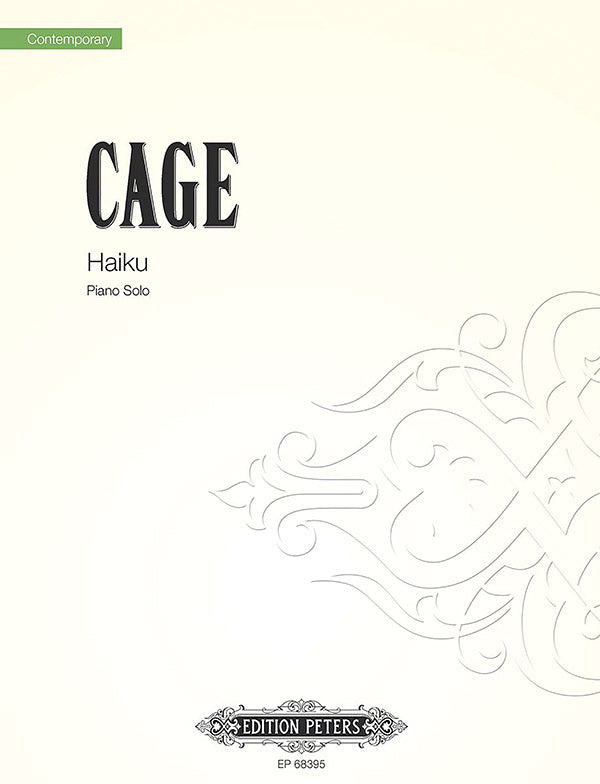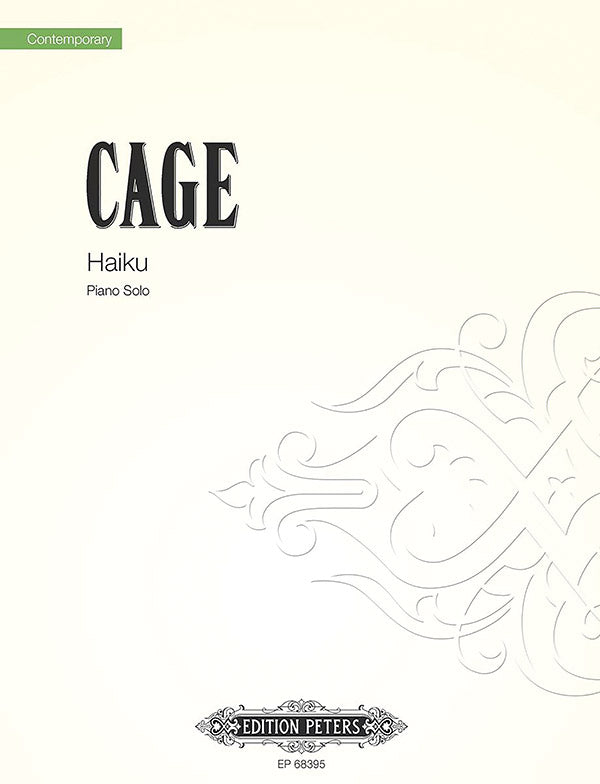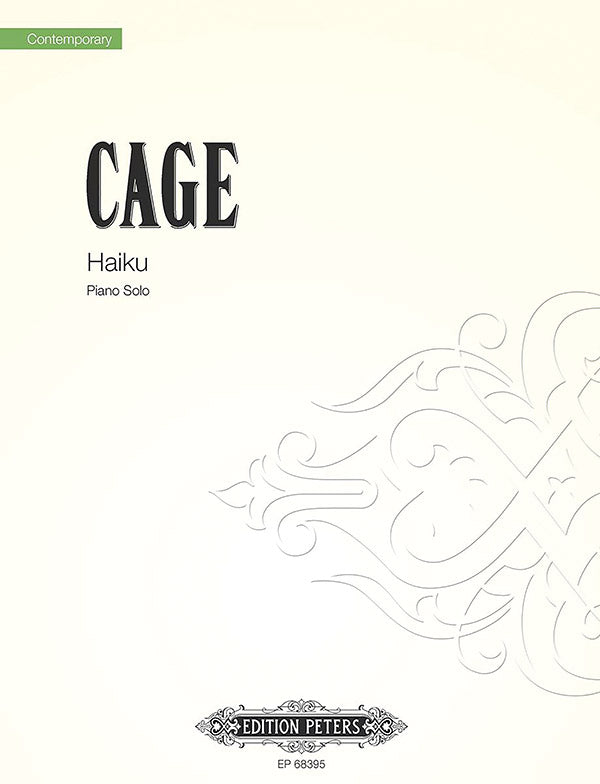John Cage
Cage: Haiku
- Composer: John Cage (1912-1992)
- Instrumentation: Piano
- Work: Haiku (1951)
- ISMN:
- Size: 9.1 x 11.9 inches
Description
In 1950–51 John Cage composed seven Haiku for piano. The manuscripts are extremely sketchy but can be deciphered, with only a few Minor rhythmic details open to speculation. in contrast to the familiar Seven Haiku of 1951–52, which Cage copied out carefully and later published in Edition Peters (P6745), these earlier Haiku use the sequence of 7-plus-5-plus-7 sound events (in nine measures) as a structural underpinning, rather than the 5-plus-7-plus-5 sequence of the later composition. One wonders whether Cage would have eventually found time to recopy these little pieces for publication. They reflect a fascinating musical path from the almost tonal Haiku I, reflecting a language similar to the Sixteen Dances (1950–51), to a completely atonal style akin pitch-wise to the Music of Changes (1951), but without ostensibly using chance methodology. The first of the four volumes of Music of Changes was completed on May 15, 1951, two months after Haiku V.
The dates of these early Haiku confirm the powerful influence on Cage of the Zen Buddhist master Daisetz Teitaro Suzuki, who gave three lectures at Columbia University in March 1951. It cannot be a coincidence that Cage composed Haiku II, III, IV, and V during that month. The titles of the pieces present a number of puzzles for the transcriber. Although using literary themes similar to those found in traditional Japanese haiku (a dear friend, stillness, frogs), no specific allusion to Japanese haiku in print in 1950 can be found. Haiku IV references the River Plurabelle of Joyce's Finnegans Wake; Haiku I might refer to a 'dear friend,' David Tudor, whom Cage met at the beginning of 1950, and who, it is said, once performed this piece. One should note that the initial one and a half measures of the piece appear on the title page of Cage's manuscript of Sixteen Dances (1950–51), though no thematic reference to Sixteen Dances has been found. Curiously, the manuscript of Haiku V contains Arnold Schoenberg's Los Angeles address in its right-hand margin.
The sixth Haiku is untitled and undated, but was likely also composed in March 1951; an alternative version of the first Haiku (undated) seems to have been rejected. These two pieces are included here as addenda." (Don Gillespie, Editor)
- Haiku I, for my dear friend, Who
- Haiku II, (What stillness!)
- Haiku III, The Green Frog's Voice
- Haiku IV, The River Plurabelle
- Haiku V
- Haiku VI (not numbered)
- Haiku I - second version (rejected?)
- Haiku VI - previously unpublished - facsimile of original manuscript
Publishers use a lot of words to describe what they sell, and we know it can be confusing. We've tried to be as clear as possible to make sure you get exactly what you are looking for. Below are descriptions of the terms that we use to describe the various formats that music often comes in.
Choral Score
A score for vocalists that only contains the vocal lines. The instrumental parts are not there for reference. Generally, cheaper than a vocal score and requires multiple copies for purchase.
Facsimile
Reproductions of the original hand-written scores from the composer.
Full Score
For ensemble music, this indicates that the edition contains all parts on a single system (there are not separate parts for each player). In larger ensembles, this is for the conductor.
Hardcover
Hardbound. Generally either linen-covered or half-leather.
Orchestral Parts
Similar to a wind set, this is a collection of parts. In the case of strings, the numbers listed are the number of copies included, though generally these are available individually (often with minimum quantities required).
Paperback
When publishers offer multiple bindings (e.g. hardcover) or study scores, this is the "standard" version. If you're planning to play the music, this is probably what you want.
Performance / Playing Score
A score of the music containing all parts on one system, intended for players to share. There are not separate parts for each player.
Set of Parts
For ensemble music, this indicates that there are separate individual parts for each player.
Solo Part with Piano Reduction
For solo pieces with orchestra, this is a version that contains a piano reduction of the orchestra parts. For piano pieces, two copies are typically needed for performance.
Study Score
A small (think choral size) copy of the complete score meant for studying, and not playing. They make great add-ons when learning concertos and small chamber works.
Vocal Score
A score prepared for vocalists that includes the piano/organ part or a reduction of the instrumental parts.
Wind Set
For orchestral music, this is a collection of wind and percussion parts. The specific quantities of each instrument are notated.
With Audio
In addition to the printed music, the edition contains recordings of the pieces. This may be an included CD, or access to files on the internet.
With / Without Fingering (Markings)
Some publishers prepare two copies - a pure Urtext edition that includes no fingering (or bowing) suggestions and a lightly edited version that includes a minimal number of editorial markings.




